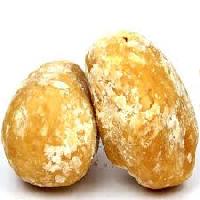The Growing Popularity of Sugarcane Product in the Vegan and Cruelty-Free Markets
The Growing Popularity of Sugarcane Product in the Vegan and Cruelty-Free Markets
Blog Article
The Trip of Sugarcane: From Harvest to Everyday Products
The journey of sugarcane is a multifaceted procedure that starts with precise cultivation and culminates in a variety of products that penetrate our everyday lives. As we discover the different aspects of sugarcane's trip, its function in sustainability and the broader implications for our setting come into sharper emphasis.
Growing of Sugarcane
The farming of sugarcane is an important farming process that needs details ecological problems and management practices. Ideal growth occurs in tropical and subtropical regions where temperature levels vary between 20 ° C and 32 ° C. Adequate rains or irrigation is important, as sugarcane grows in wet dirt with well-drained conditions (sugarcane product). Dirt quality considerably affects yield; thus, farmers commonly carry out dirt examinations to identify nutrient needs
This approach promotes efficient gathering and makes best use of sunlight direct exposure. Crop rotation and intercropping are suggested methods to enhance soil fertility and lower bug problems.
Timely application of these plant foods can significantly boost sugar yields. Generally, effective sugarcane growing pivots on a mix of ecological stewardship, calculated planning, and continuous monitoring practices.
Collecting Strategies
Successful sugarcane cultivation culminates in the gathering stage, which is pivotal for optimizing yield and ensuring top quality. The timing of the harvest is crucial; sugarcane is commonly collected when sucrose degrees peak, generally in between 10 to 18 months after planting. This period varies based on environment, dirt kind, and sugarcane variety.
Gathering methods can be generally categorized into guidebook and mechanical techniques. Manual harvesting is labor-intensive, depending on competent workers that utilize machetes to cut the stalks short. This method enables for selective harvesting, where just the ripest canes are chosen, consequently enhancing overall sugar web content.
On the other hand, mechanical harvesting has gotten popularity as a result of its efficiency and cost-effectiveness. Specialized farmers geared up with reducing knives and conveyor systems can process big locations rapidly, substantially reducing labor costs. Nevertheless, this method might cause the inclusion of premature walking sticks and a prospective reduction in sugar quality.

No matter of the method employed, guaranteeing that harvested walking canes are carried quickly to refining facilities is vital. Prompt handling decreases wasting and maintains the integrity of the sugarcane, establishing the stage for ideal handling.
Processing Approaches
Handling sugarcane entails a number of important steps that transform the harvested stalks right into usable products, mainly sugar and molasses. The initial stage is washing the walking stick to get rid of soil and debris, followed by the extraction of juice via squashing or milling. This procedure generally utilizes heavy rollers that break the walking cane fibers to release the sweet fluid had within.
When the juice is extracted, it goes through clarification, where contaminations such as soil bits and bagasse are gotten rid of. This is often accomplished by including lime and heating up the juice, allowing sedimentation. The cleared up juice is then concentrated through dissipation, where water web content is decreased, leading to a thick syrup.

Ultimately, the handling of sugarcane not just generates sugar and molasses yet also prepares for numerous derivatives, which will certainly be discovered in subsequent conversations.
Products Derived From Sugarcane
Sugarcane is a functional crop that yields a vast range of items past simply sugar and molasses. Among the main spin-offs are ethanol and biofuels, which have actually acquired importance as eco-friendly power sources. Ethanol, created with the fermentation of sugarcane juice, functions as a different to fossil fuels and is often mixed with fuel to produce cleaner-burning gas, decreasing greenhouse gas emissions.
Furthermore, sugarcane is a substantial source of bagasse, the fibrous residue continuing to be after juice removal. Bagasse is made use of in different applications, consisting of the manufacturing of paper, eco-friendly product packaging, and as a biomass fuel for power generation. Its usage not only lowers waste yet additionally boosts the sustainability of sugarcane processing.
Furthermore, sugarcane-derived products reach the food industry, where it serves as a natural flavoring representative and sweetener in various culinary applications. In the realm of cosmetics, sugarcane removes are included right into skin care products due to their all-natural exfoliating properties.
Ecological Influence and Sustainability
The cultivation and processing of sugarcane have substantial ramifications for environmental sustainability. This plant calls for considerable water resources, look at this site typically resulting in deficiency of local water materials and impacting surrounding ecological communities. In useful site addition, using plant foods and chemicals in sugarcane farming can lead to soil degradation and river air pollution, presenting threats to biodiversity.

Sustainable sugarcane farming additionally advertises dirt wellness via plant turning and lowered husbandry, improving carbon sequestration. The fostering of these methods not only sustains ecological stability yet additionally enhances the durability of farming communities versus climate change.
Verdict
In recap, the journey of sugarcane encompasses numerous stages from cultivation to processing, eventually leading to a vast variety of products. The value of sugarcane expands past mere sugar, contributing to sustainable energy through ethanol production, lasting packaging via bagasse, and natural removes for cosmetics. This complex crop plays a crucial role in both dietary enrichment and ecological sustainability, highlighting its significance in contemporary farming and industrial methods.
Effective sugarcane growing finishes in the harvesting stage, which is crucial for optimizing return and making certain quality. The timing of the harvest is important; sugarcane is commonly collected when sucrose levels height, typically between 10 to 18 months after planting.Handling sugarcane entails several crucial steps that official source change the gathered stalks into usable products, mainly sugar and molasses.Sugarcane is a versatile plant that produces a wide array of items beyond just sugar and molasses. In addition, the usage of fertilizers and chemicals in sugarcane farming can result in soil destruction and waterway air pollution, posturing threats to biodiversity.
Report this page